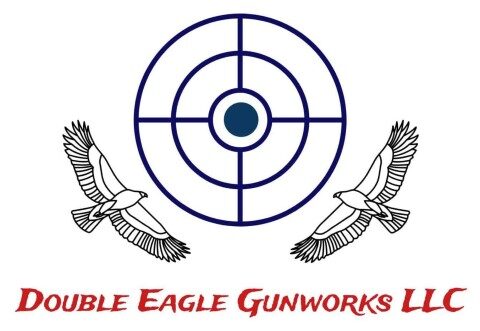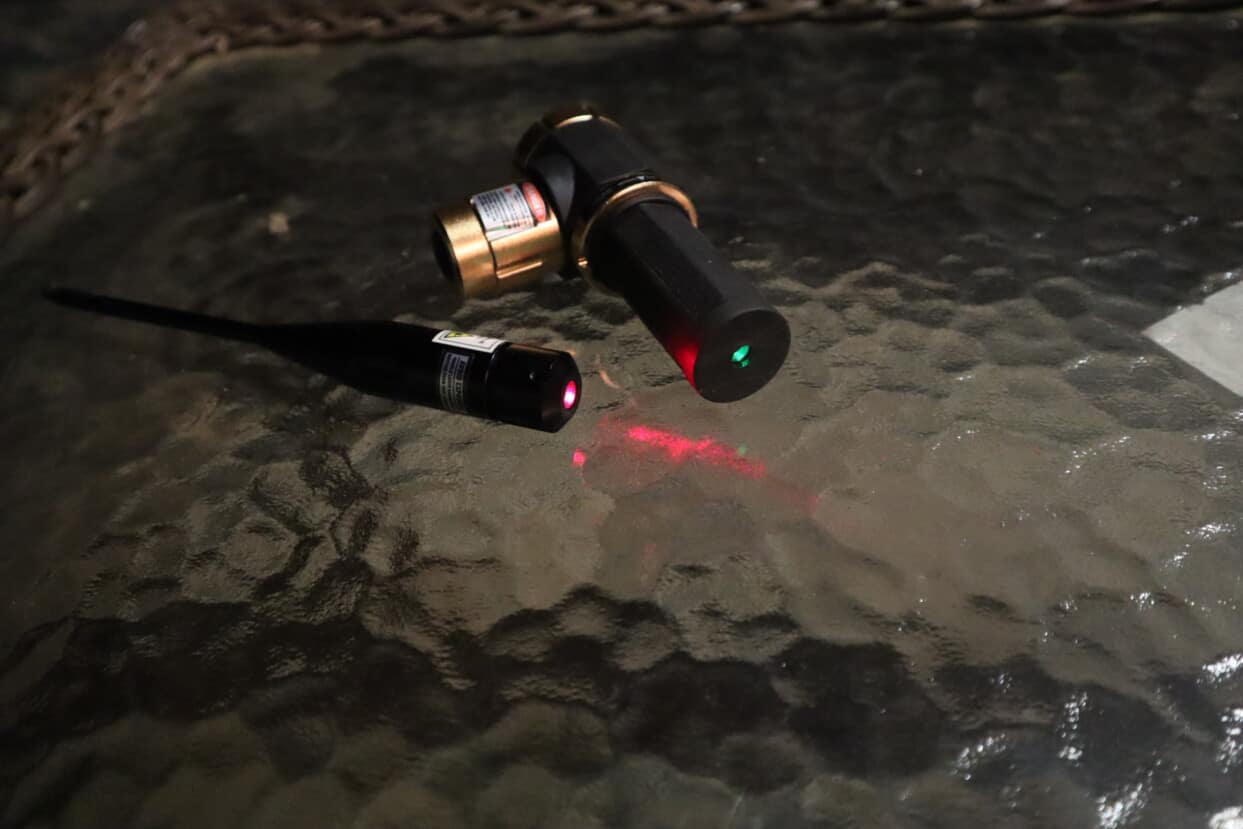A bore sight is an aid to calibrate the scope or sights on your handgun or rifle. Three types you are likely to encounter:
- Magnetic sights, which attach magnetically to the end of your barrel
- Inserted sights, which fit into the muzzle
- Chamber seated sights, which insert into the chamber where you would put a round of ammunition
The laser comes in red or green. Red is good for low light conditions and is likely to come in at a lower price point. Green laser is easier to see in the daytime.
Laser lights run on batteries. Some types will have an on and off switch. Other models will turn on when you screw in the head, similar to the motion you make when you tighten the head of an ink pen to bring out the point for writing.
Make sure you twist this kind to turn it off after each use. You can also store the batteries upside down or in another location.
All three types have the same function: you attach them to your gun and then point at the target to determine the accuracy of your scope or sight.
The laser points at the place where your shot will hit, and you will adjust the scope or sight until it lines up with the laser. This is called zeroing the shot.
Zeroing the shot will get you close to perfect, but you will still want to go the the range and do some actual shooting (without the bore sights) once you have gotten a good sight picture with the bore sight.
Magnetic Laser Bore Sights
The easiest bore sight to use is the magnetic version. You simply attach it to the end of the barrel and point the gun at your target. Its accuracy will be less because of the decreased precision of the placement.
The red or green laser points at the place you will hit and you can compare that point with the laser on your scope or the crosshairs on your sights to see how accurately your scope or sight predicts the shot.
Then you adjust the scope or sights until the two points match. The magnetic bore sight fits all calibers because it it simply hanging out on the end of your gun.
Insertable Laser Bore Sights
Using the insertable version is a little like taking someone’s temperature. You insert the skinny end into the muzzle of your rifle or handgun.
If you wish to use the bore sight on multiple calibers, buy one that has the right adapters. It’s a bit like an adjustable screwdriver with detachable bits for different sizes and shapes of heads.
Choose the caliber that fits your gun. Unscrew the adapter on the end of the bore sight and screw in the new adapter. Insert the tip into the muzzle of the gun. Aim the gun at the target and note where the laser points. Use this point to calibrate your scope or sight.
Chamber Seated Laser Bore Sights
You will need a separate chamber seated laser bore for each caliber you wish to test. Seat it directly into the chamber where you would load a round of ammunition. Point your gun at the target and note where the laser hits. Line up your scope or sights until they match the laser.
The chamber seated bore sight will be your most accurate option because it is specific to your caliber and because it is right where the ammunition goes.
Precautions
Unload your gun for bore sighting. You will be blocking the muzzle with the magnetic bore sight or the insertable bore sight, so shooting would destroy the bore sights and cause a malfunction.
The chamber seated bore sight will be where the ammunition goes, and you don’t want to damage it by shooting it. Remove the ammunition and keep your finger off the trigger.
Continue to follow the four cardinal rules of gun safety: treat all guns as if they are loaded, don’t point the muzzle at anything you are not willing to destroy, keep your finger off the trigger until you are ready to shoot, and know your target and what is beyond it.
If you are at the gun range, remove the bore sight before inserting ammunition and shooting at your target.
How to Use Laser Bore Sights
For the magnetic bore sight, simply place the bore sight at the end of the muzzle of your gun. Turn on the laser by pressing the button at the non-magnetic end.
For the insertable bore sight, choose the right adapter for your caliber and screw it onto the end of the bore sight. Turn it on by screwing the head on tighter.
Place it directly into the muzzle of your handgun or rifle, making sure it is stable and well aligned. You can stabilize your gun on a bench stand or with a gun vise. Adjust the scope or sights until what you see through the scope matches where the laser hits.
For the chamber seated bore sight, open the bolt, rack the slide, or open the cylinder. Place the bore sight in the chamber. Close the bolt, release the slide, or close the cylinder. The laser light will shine out the end of the barrel. Seating the bore sight turns it on.
Refer to the directions on your scope to learn how to calibrate it. Adjust the elevation and windage until the reticle or crosshairs scope match where the laser goes.
Choose a range of about 15 to 25 yards for best accuracy with handguns. Rifles have a longer range. You may want to increase the range in several steps successively up to about 100 yards.
This technique does not take the place of shooting to get your sights exactly the way you want them. It does get you in the ballpark to save time and ammunition when you go to the range later to perfect your sighting.
Which Guns Are Compatible with Laser Bore Sights?
You can use laser bore sights with just about any handgun or rifle. Be sure you have the right bore sight for your caliber.
To use an insertable bore sight, you need to have a long enough barrel on your revolver to receive it.
Chamber seated bore sights come in calibers for rifles, semi-automatics, and revolvers. Choose the right caliber for your gun.
Watch our Double Eagle Gunworks YouTube channel for informative videos.


